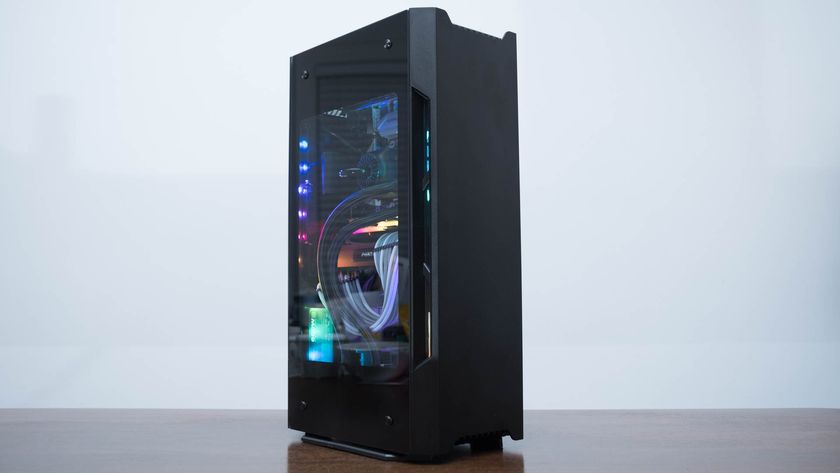Why you can trust TechRadar
We shoot a specially designed chart in carefully controlled conditions and the resulting images are analysed using DXO Analyzer software to generate the data to produce the graphs below.
A high signal to noise ratio (SNR) indicates a cleaner and better quality image.
For more more details on how to interpret our test data, check out our full explanation of our noise and dynamic range tests.
Here we compare the Sony NEX-5R with the Sony NEX-5R, Olympus PEN E-PL5 and Fuji X-M1.
JPEG signal to noise ratio
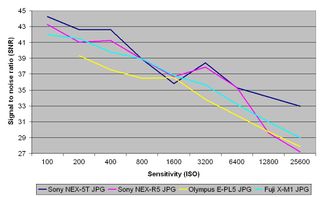
Here we can see that the Sony 5T has performed very well, and as expected, extremely similarly to its predecessor, the 5R with which it shares a sensor and processor. It appears to have improved slightly at the very top end of the sensitivity run. It beats all of the other cameras on test for most sensitivity settings, although it does drop at ISO 1600 to be taken over by the Olympus and Fuji briefly, before returning to the top of the chart for the rest of the sensitivity run.
Raw (after conversion to TIFF) signal to noise ratio
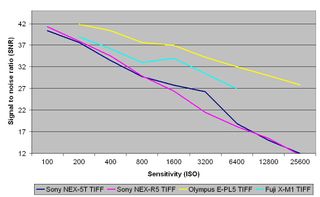
In terms of raw files, the 5T is beaten by its rivals, the Olympus E-PL5 and Fuji X-M1 at every sensitivity setting, falling some way behind the Olympus. It does offer a broader range of sensitivity settings than both of the other cameras, offering ISO 100 at lowest end, for instance. Again, as expected, the camera performs very similarly to the 5R. A lower performance here than the other cameras may indicate that you have greater scope to control noise in post production.
JPEG dynamic range
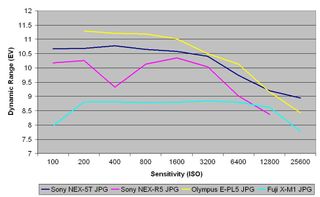
The NEX 5T puts in a consistent performance across the sensitivity range, but it is beaten at almost every setting by the Olympus PEN E-PL5, just taking over at the very top end of the run (25,600). It scores significantly higher than the Fuji X-M1 though, and even appears to beat its predecessor, the 5T, even though the sensor is the same.
Raw (after conversion to TIFF) dynamic range
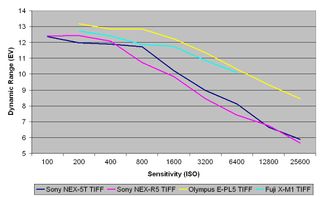
Here we can see that again in terms of raw files, the 5T is beaten by its rivals, the Olympus PEN E-PL5 and Fuji X-M1 at every sensitivity. It is very closely matched to the 5R, as is to be expected. A lower performance here may indicate that there is scope to bring out better colours in post production, with raw format colours being more accurate, if not necessarily as pleasing to the eye as the JPEGs.
Current page: Noise and dynamic range
Prev Page Image quality and resolution Next Page Sample imagesAmy has been writing about cameras, photography and associated tech since 2009. Amy was once part of the photography testing team for Future Publishing working across TechRadar, Digital Camera, PhotoPlus, N Photo and Photography Week. For her photography, she has won awards and has been exhibited. She often partakes in unusual projects - including one intense year where she used a different camera every single day. Amy is currently the Features Editor at Amateur Photographer magazine, and in her increasingly little spare time works across a number of high-profile publications including Wired, Stuff, Digital Camera World, Expert Reviews, and just a little off-tangent, PetsRadar.



